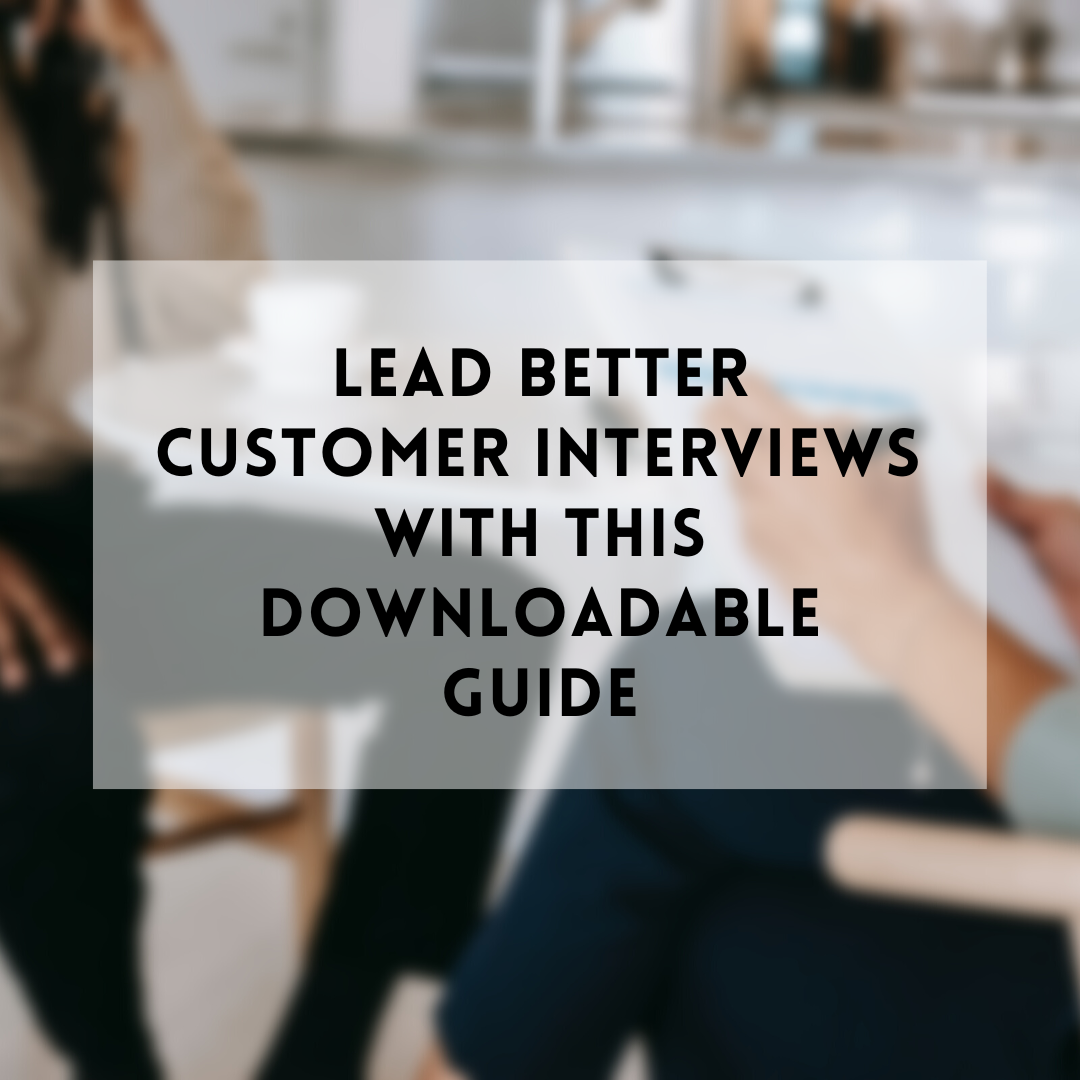Lead better customer interviews with this downloadable guide
Customer interviews are an opportunity to put a prototype in front of real people to learn what is and isn’t working so you can adjust accordingly. In other words, this step helps make sure your team is building the right thing.
In order for it to work, you need to get the right information from your interviewees, and that means asking the right questions.
I’ve included a link to my customer interview guide at the end of this article for you to download. Before you scroll that way, I highly encourage reading through the general guidelines first. They’ll give you context for the guide and help you understand how to craft questions that will get the right information flowing.
Curated questions are critical
If you’re facilitating a Design Sprint, you’ll have already taken your team through a goal-setting exercise to define the questions they want to answer. Treat this as the input for your customer interview questions, but don’t assume it’s a copy/paste situation.
For example, if your client wants to know if people trust them / want to work with them / are ready to act, you need to craft questions that will reveal those answers. Asking “do you trust this service?” isn’t the best way to gather impactful data (not to mention, closed-ended questions are a no-no).
Instead, I’d ask something like, “Tell me about your reactions to this offering.” This allows your interviewee to share their sentiments and true feelings about what they’re seeing and how it makes them feel. And that’s the kind of intel you want to share with your client.
If it’s your job to craft the interview questions, be sure they’re structured to reveal the type of information you need, then listen closely. I’ve realized that the order in which we receive answers to our questions isn’t always linear (and won’t necessarily line up with the interview guide). Really tune into what you’re hearing so you can determine if you’re getting answers to the things you’re trying to learn.
Don’t lead the witness
When you’re entrenched in the team’s goals, it can be hard to separate yourself from their hopes and dreams. Suspend those for the interview, otherwise your bias may get in the way of uncovering real insights.
Switch into a researcher/curiosity mindset to discover the truth rather than trying to get to a specific outcome. Sometimes you’ll learn that what the team has created doesn’t meet the mark, which is actually a better result than leading the interviewee to say something you want to hear — doing that won’t serve the end product, or your team.
Ask open-ended questions
This one is a given. You never want to ask a yes-or-no question because it dead-ends the conversation and doesn’t lead to quality insight. Instead, use questions that stimulate a lot of dialogue, like:
What are your initial impressions?
What are you interested in?
What would you expect to do here? Talk out loud.
Is there anything confusing about this?
What are your reactions to what you’re seeing here?
Ask comparison questions
Always give your interviewees a chance to compare what they saw to something else. This contrast helps provide insight that could be beneficial to prototype adaptations. For example:
Thinking back to what you saw, how does it compare to the tools or products you use today?
How does this feature/page/item compare to what you’ve seen elsewhere?
If you’re presenting more than one option for the person to react to, ask them to compare them to one another:
How would you compare concept A to concept B?
Go from broad to specific
If you’re not getting enough information or feedback from your interviewee, it may be time to shift to more specific questions. Call their attention first to what you’re interested in learning about:
Did you happen to notice that item / content / information…?
Tell me your thoughts on it, OR
Talk to me about your reactions to this step
Always ask closing questions
While you’ve probably covered a lot of ground already, adding closing questions is a great way to snag additional information that might not have been discussed. I find that they reveal a lot of insights around sentiment, likelihood of use, and whether or not the product or service made sense to the interviewee.
How would you describe what you saw today to a friend / colleague?
Was there anything you were hoping to see today that you didn’t see?
Is there anything you would like to share or suggest to the team who is working on this?
If you have any follow-up thoughts, please feel free to email me!
It pays to be thoughtful about the types of questions you ask interviewees. In many cases, it has saved my teams from developing the wrong thing, or something that fell short.
Feel free to borrow my customer interview guide as a template for your own work. Adding it to your facilitation toolkit will make it easier to hit the ground running, whether it’s time for interviews on day five of a Design Sprint, or any other customer interview process.
